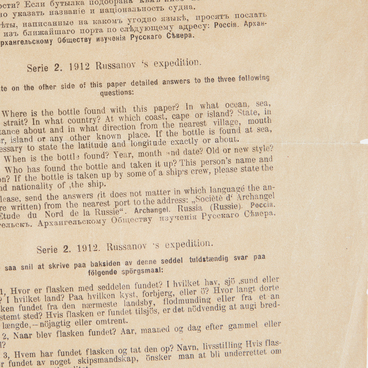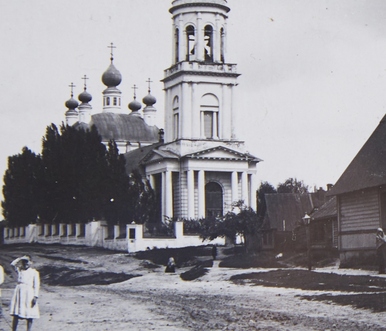The collection of the Rusanov House Museum contains a postcard with a view of the Oka River near the Vitebsk Bridge in the late 19th century.
The Oka flows down out of a spring in the village of Aleksandrovka, Glazunov district, Oryol region, at an altitude of just over 221 meters above sea level. It passes through the Central Russian Upland, in the upper reaches it has a deeply incised, mostly narrow river valley with significant slopes. First, it flows north and merges with the Orlik River in Oryol, with the Upa River in the Tula region, near Kaluga, at the confluence with the Ugra, makes a sharp turn to the east and after flowing through Aleksin and Tarusa again turns north, then near the town of Protvino again turns east. On the section from Serpukhov to Stupino, it makes up an approximate border of the Moscow and Tula regions. Near the city of Kolomna, it merges with the Moscow River and further, making a bend 10 kilometers east of Lukhovitsy (at the confluence of the Tsna River), flows southeast to Ryazan. In the Ryazan region, due to the hilly areas near the Oka, there is a noticeable sinuosity. Near the confluence with the Pronya, the Oka, curving, turns to the right, and after the confluence with the Para, it again flows to the north, making a large bend near Kasimov. Below, on the territory of the Ermishinsky district, the Moksha flows into the Oka, and on the territory of the Kasimovsky district, the Unzha river. Further, it flows with noticeable bends, dividing the Vladimir and Nizhny Novgorod regions, where it flows through Murom, Pavlovo (in the Pavlovsky district, the Klyazma flows into it), and Dzerzhinsk. At the end of its course, the Oka reaches Nizhny Novgorod, where it flows into the Volga.
In Oryol, the Vitebsk railway bridge crosses the
Oka. The railway line with a length of 520 kilometers, leading from Oryol to
Vitebsk, was put into operation at the end of 1868. It all started in 1863,
when the Governor of Oryol, Major General Nikolay Levashov, on the proposal of
the Chief Manager of Communications and Public Buildings of the Russian Empire,
Pavel Melnikov (the future First Minister of Communications), ordered to start
research on the construction of a railway between Oryol and Vitebsk. They
returned to this idea in 1865, when the construction of the Dinaburg
(Daugavpils) — Vitebsk line was underway. The construction of the route, which
was divided into four sections, proceeded quickly, and new settlements and
stopovers appeared along the road. During the year, the Zemstvo Oryol–Vitebsk railway
was built and brought contractors 19 million rubles in profit.


